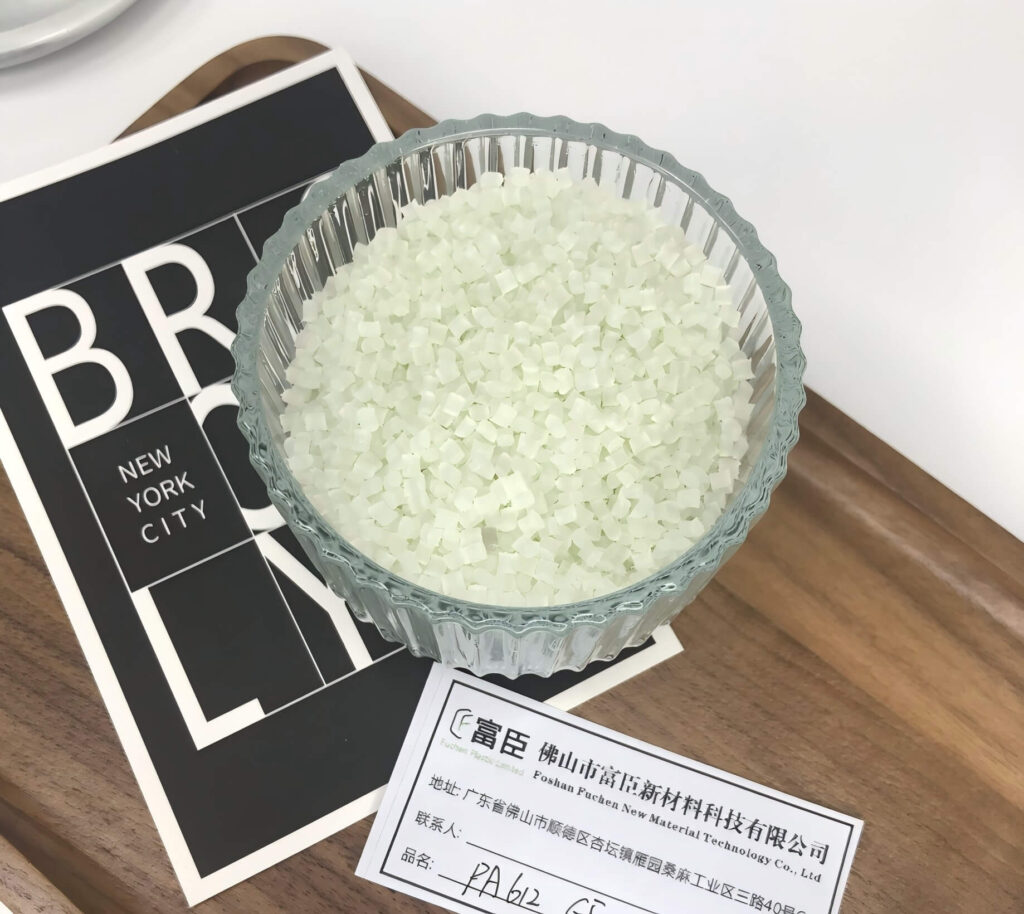Introduction of PA6 vs PA612
In the world of polyamide (nylon) polymers, two key variants, PA6 and PA612, stand out for their unique properties and applications. These polymers have specific differences in their chemical compositions, which impact their overall performance in various industrial and commercial uses. This article will explore these differences, focusing on their chemical structure, thermal properties, solubility, and mechanical characteristics.
Chemical Composition of PA6: A Linear Structure
PA6, commonly known as nylon 6, is a semi-crystalline polymer produced from caprolactam. The production process involves the ring-opening polymerization of caprolactam, resulting in a linear structure. This polymer has repeating units of -(NH-C(CH3)-CO-)n-, where methyl groups enhance its chemical resistance, especially against acids and bases.
PA612: A Copolymer with Enhanced Flexibility
PA612, or nylon 612, is a copolymer derived from adipic acid and caprolactam. The inclusion of a butane diol segment in its repeating unit results in a unique structure: -(NH-C(CH3)-CO-O-C6H4-CO-)n-. This structure contributes to PA612’s increased flexibility and impact resistance compared to PA6.
Melting Points: A Key Thermal Difference
The melting point is one of the primary distinctions between PA6 and PA612. PA6 has a lower melting point, ranging from 220-230°C, due to its linear structure, which allows for more crystallization. In contrast, PA612’s branched structure leads to a higher melting point of 265-275°C, as its branches reduce the formation of crystalline regions.
Solubility: Processing and Resistance
PA6 is more soluble in common organic solvents, making it easier to process and mold. On the other hand, PA612 has a more solvent-resistant structure due to its copolymer nature, reducing its solubility. While this makes PA612 harder to process, it also improves its chemical and heat resistance.
Mechanical Properties: Impact vs. Tensile Strength
When it comes to mechanical properties, PA612 excels in impact resistance and flexibility because of its butane diol component. This makes it ideal for automotive parts, electrical insulation, and fibers. In contrast, PA6 is preferred for applications requiring high tensile strength and stiffness, such as textiles, fishing nets, and industrial uses.
Conclusion of PA6 vs PA612
Although both PA6 and PA612 are polyamide polymers, their differing chemical compositions lead to distinct properties. PA6’s linear structure provides lower melting points, higher solubility, and good chemical resistance, making it suitable for applications that require tensile strength and stiffness. PA612’s copolymer structure offers better flexibility, impact resistance, and higher heat resistance, making it ideal for applications that demand durability. Understanding these differences is key to selecting the right material for specific industrial and commercial needs.
PA6 vs. PA612 – FAQ Summary
What is the main difference between Nylon 6 and Nylon 612?
- Nylon 6 is a linear polymer derived from caprolactam, while nylon 612 is a copolymer made from adipic acid and caprolactam. Nylon 612 has added flexibility due to its copolymer structure.
What are the thermal properties of Nylon 6 and Nylon 612?
- Nylon 6 has a lower melting point (220-230°C) due to its linear structure. Nylon 612 has a higher melting point (265-275°C) because of its branched structure.
How do Nylon 6 and Nylon 612 differ in solubility?
- Nylon 6 is more soluble in organic solvents, making it easier to process. Nylon 612 is more solvent-resistant, which increases its durability but makes it harder to mold.
Which polymer has better impact resistance?
- Nylon 612 has better impact resistance and flexibility, making it ideal for applications like automotive parts and electrical insulation.
Which polymer is better for tensile strength and stiffness?
- Nylon 6 offers higher tensile strength and stiffness, making it suitable for textiles, fishing nets, and other industrial applications.
What factors should be considered when choosing between Nylon 6 and Nylon 612?
- Consider the application’s need for tensile strength, flexibility, impact resistance, chemical resistance, and processing ease. Nylon 6 is better for strength and stiffness, while Nylon 612 is preferred for durability and flexibility.
Which polymer is easier to process?
- Nylon 6 is easier to process due to its higher solubility in solvents. Nylon 612 is more difficult to process but offers better heat and chemical resistance.

